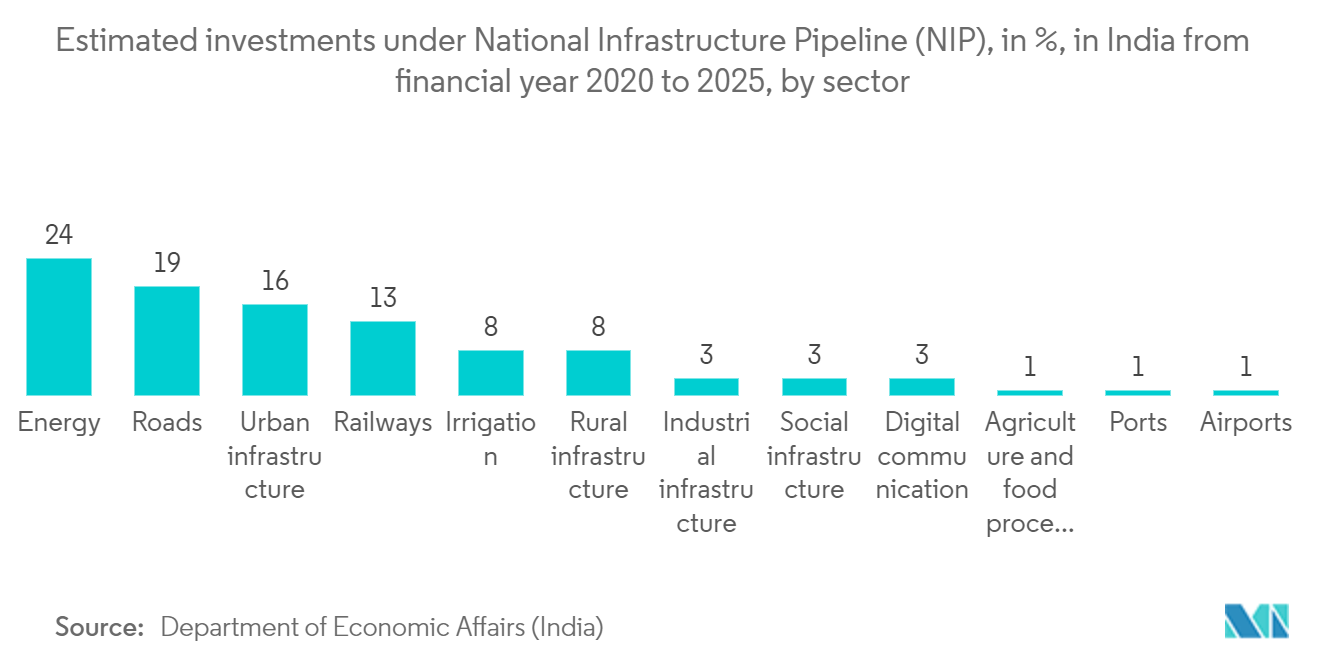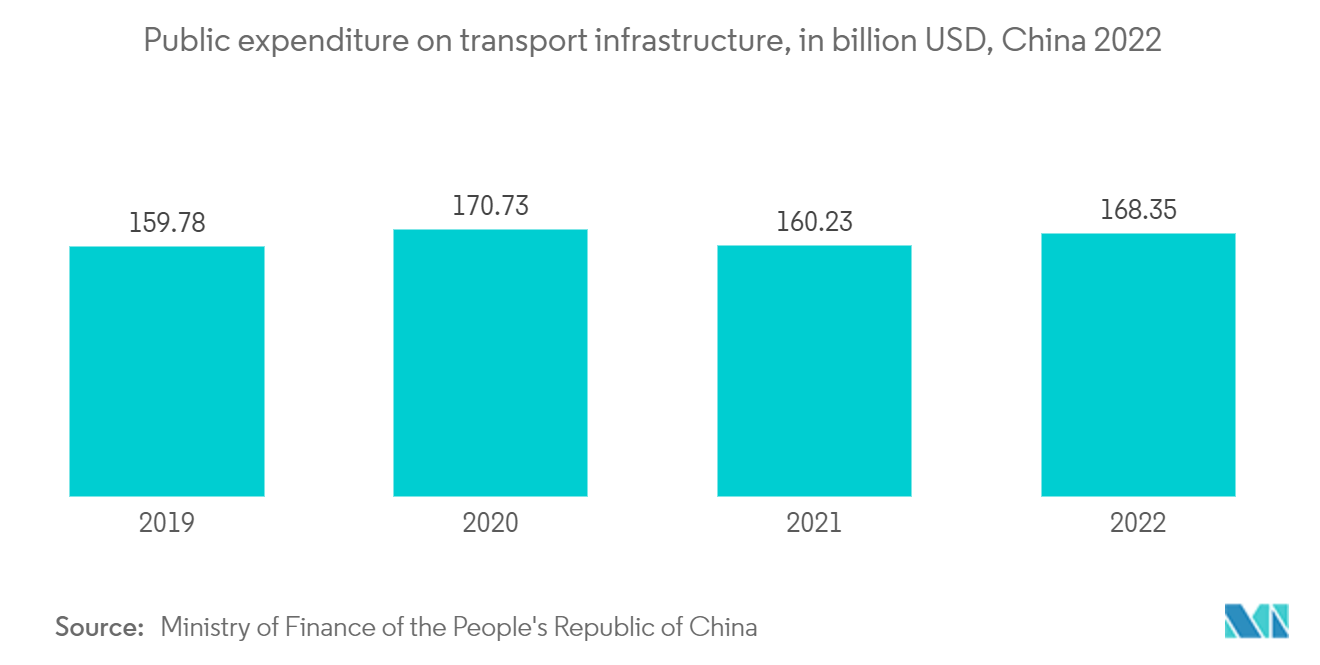Market Trends of Infrastructure Sector In Asia Pacific Industry
Increasing Investments in Infrastructure Sector
Raising financing for long-term infrastructure requirements has required some bold thinking. For the first time, the Philippines has planned to modernize its infrastructure by soliciting international finance and allowing foreign control of its utilities. Officials from the government of newly elected President Ferdinand Marcos Jr revealed their five-year growth strategy during a visit to London as part of the Philippine Economic Briefing. Modernization will be a major priority of the Philippines Development Plan, with 5.6% of the gross domestic product (GDP) devoted to infrastructure.
The Indian government has planned to build highways reaching 313 kilometers for Rs. 11,000 crores to overhaul the road infrastructure in Punjab, Haryana, and Rajasthan. As of March 2022, the transfer from the National Investment Fund (NIF) was pegged at Rs. 20,000 crores (USD 2.61 billion). The Ministry of Road Transport and Highways has been given almost INR 68,000 crore more in funding for 2022–23 than was initially planned for 2021–22. Of all the ministries in 2022–2023, this is the ministry with the most significant rise in absolute terms. This extra funding has been allocated almost entirely towards NHAI investments. After several years, NHAI won't need to borrow any money and will only use funds from the budget.
Local governments are raising funds for infrastructure projects by issuing special-purpose bonds (SPBs). In 2021, China allocated more than CNY 3.65 trillion (USD 573 billion) in SPBs for local governments, from which more than 95% of the funds were issued by December 2021. In addition, more than 50% of these raised funds were utilized for developing transport infrastructure, municipal administration, and industrial park infrastructure sectors. About 30% was spent on social projects, such as affordable housing, health and sanitation, education, elder care, and culture and tourism. In contrast, the remaining 20% was used to develop agriculture, forestry, irrigation, energy, and rural-urban cold chain logistics.

Transportation Infrastructure is Witnessing Significant Growth
China: China's transportation infrastructure is growing at a fast pace. For instance, in 2022, China's State Council released the 14th five-year plan for enhancing its transportation system. The plan aims to build and strengthen roads, railways, ports, and waterways, as well as the technology and human capital involved in the transportation industry. The country is highly focused on transportation infrastructure development. Currently, China has eight vertical (north-south) and eight horizontal (east-west) high-speed railways and has eliminated bottlenecks in regular speed railways.
China faced issues in the logistics sector, such as the poor state of warehouses and transportation equipment, urban traffic congestion, and talent shortage. The 14th five-year plan will address these issues and promote the development of intelligent warehousing and distribution facilities, improving equipment standardization, etc. The plan also enhances the infrastructure of suburban railways, multimodal freight transportation, and specialized transportation services.
India: According to the Economic Survey 2021–22, the country's road network has grown significantly in the current fiscal year compared to prior ones. In 2020–21, 13,327 km of roads were built, compared to 10,237 km in 2019–20, representing an increase of 30.2% over the previous year. 3,824 km of new roads were built in 2021–2022 (up till September). According to the Ministry of Road Transport and Highways, in the financial year 2022, the national highways awarded in India were around 12.7 thousand kilometers, while the constructed length was 10.46 thousand kilometers for the same time frame. In fiscal year 221, the length of national highways constructed peaked during the presented period at 13.3 thousand kilometers.
Japan: Japan is known for its advanced transportation infrastructure, including an extensive network of high-speed railways (Shinkansen), well-maintained roads, and efficient airports. Ongoing investments were being made to expand and modernize these systems. Several airports in Japan, including Tokyo's Haneda and Narita airports, have been undergoing expansion and renovation to accommodate increasing air traffic and tourism. Investments were made to enhance passenger facilities and improve runway capacity. Japan is known for its extensive and efficient high-speed rail network, the Shinkansen. The country has been working on expanding and upgrading this network to connect more regions and improve connectivity between cities. In September 2023, The Japanese government invested around P1.5 trillion (USD 26 billion) worth of infrastructure projects through an official development assistance (ODA) focusing on funding transport infrastructure programs. The North-South Commuter Railway (NSCR) Project, Metro Manila Subway Project (MMSP), LRT-1 Cavite Extension, LRT-2 East Extension, and MRT-3 Rehabilitation are among the transportation development programs, according to the Department of Transportation (DOtr).

